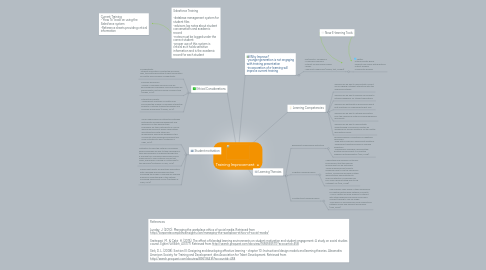
1. Student motivation
1.1. Social media allows for interaction between participants increasing engagement and discussion on the learning topic. Employees are then participants in a social learning environment where observations and interactions with others are remembered. Employees engaged in this community style learning environment are more motivated to learn (Saritepeci & Cakir, 2015).
1.2. Motivation to learn the material is increased when employees are able to take ownership of their learning which is achieved through the e-learning tool Composica which has various media forms to learn material such as text, video, and graphs. Learning is customized to the individual (Saritepeci & Cakir, 2015).
1.3. Assessment results are positively associated with a blended learning approach thus increasing the modes of learning will improve employee understanding of the material increasing assessment scores (Saritepeci & Cakir, 2015).
2. Ethical Considerations
2.1. Confidentiality -Student information is protected by FERPA laws, transmitting sensitive student information via Twitter would breach confidentiality
2.2. Company Resources -Misuse of company resources may be encouraged as employees use social media for inappropriate functions during company time (Lunday, 2010).
2.3. Intellectual Property -Sharing best practices on Twitter may encourage the release of company intellectual property of internal training techniques and company procedures (Lunday, 2010).
3. References Lunday, J. (2010). Managing the workplace ethics of social media. Retrieved from http://corporatecomplianceinsights.com/managing-the-workplace-ethics-of-social-media/ Saritepeci, M., & Çakir, H. (2015). The effect of blended learning environments on student motivation and student engagement: A study on social studies course. Egitim Ve Bilim, 40(177) Retrieved from http://search.proquest.com/docview/1656565570?accountid=458 Sink, D. L. (2008). Section III: Designing and developing effective learning - chapter 10: Instructional design models and learning theories. Alexandria: American Society for Training and Development, dba Association for Talent Development. Retrieved from http://search.proquest.com/docview/896136435?accountid=458
4. Salesforce Training -database management system for student files -advisors log notes about student conversations and academic record -notes must be logged under the correct student -proper use of this system is critical as it holds sensitive information and is the academic record for each student
5. Current Training -"How To" book on using the Salesforce system -Reference sheets providing critical information
6. Why Improve? -younger generation is not engaging with training presentation -incorporation of e-learning will improve current training
6.1. Composica -e-learning classroom -interact via discussion boards -quizes -view multi-media files (videos, text, images)
6.1.1. Twitter -internal private group -support from peers with questions -instant answers -community learning
7. Learning Theroies
7.1. Behaviorist Programmed Instruction
7.1.1. Learning behavior is positively or negatively reinforced -used with Composica assessment questions -Assessment questions based on learning objectives -Answered by individual, receive either positive reinforcement or corrective feedback with explanation (Sink, 2008).
7.2. Cognitive Learning Theory
7.2.1. Understand how learning is internally processed so that the learning environment can be optimized -When employees are trying to remember how to use the Salesforce system, Composica will have multiple learning styles demonstrated to improve retention. An example will be a video demonstrating how to log a student call (Sink, 2008).
7.3. Constructivist Learning Theory
7.3.1. How learners make sense of their experiences by creating relationships between concepts -Use of Twitter will allow learners to interact with others experiencing similar issues and connect training to real job usage -Discussion of processes will allow connections between similar and different procedures (Sink, 2008).
